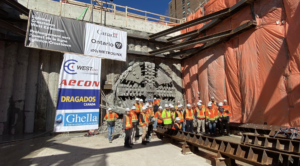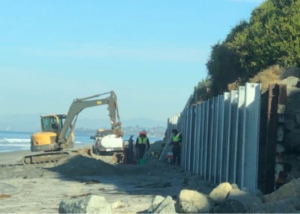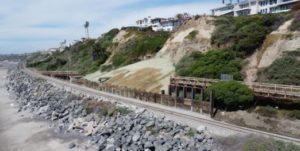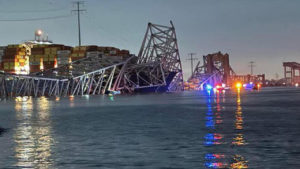Caltrain Seeks to Repair Rail Bridge After Storm; Repairs to Start Next Year
Written by Jennifer McLawhorn, Managing Editor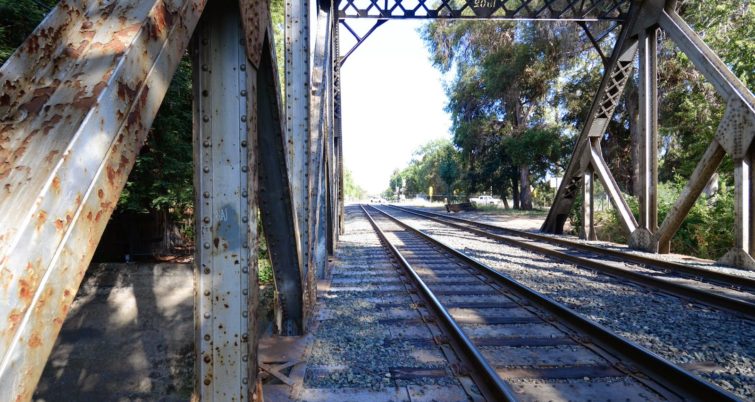
PALO ALTO, Calif. – Caltrain is trying to repair a rail bridge after it was damaged from a storm in late December 2022.
The Almanac reports Caltrain is trying to repair a rail bridge after it was damaged from a storm in late December 2022.
Caltrain declared an emergency when it found “eroded soil on the north creek bank that supports the foundation of the 1902 bridge.” An agreement between Caltrain and Menlo Park was approved by the Palo Alto City Council on October 16th. The agreement “determines how much each of the three parties would pay to repair the bank that supports both the rail bridge and a bicycle bridge that runs parallel to it.”
However, even with the agreement, it does not look like the bridge will be fixed in time before the next rainy season. In April, a consultant for Caltrain recommended that “the bank be shored up,” and Walsh Construction was contracted to perform said work.
The agency also submitted state and federal applications to agencies “that govern the riparian corridor, including California Fish and Wildlife and the U.S. Army Corps of Engineers.” Deputy Chief for Rail Development for Caltrain, Robert Barnard said: “They got the materials ready with a short lead time. . . and had crews ready to go to work”
But the U.S. Army Corps of Engineers wanted Caltrain to “consult with and get concurrence from the state’s preservation office,” to which Barnard commented that was “disheartening,” because Caltrain would not be able to start work before the rainy season. There are also endangered species within the creek, and as such, work is not permitted to take place during the Winter. Therefore, Caltrain will continue to “monitor the bridge during periods of heavy rain and implement an emergency measure if the structure seems unstable: placing a series of ‘super sacks’ – filled with rocks and weighing about a ton each – at the base of the bridge to stabilize it.”
Barnard went on to say that “if this winter’s weather results in continued erosion, the team will be ready to act to implement a temporary bank stabilization solution, and we’re working with the Army Corps of Engineers and regulators as to what that might be.” Those permanent bank fixes are estimated to cost around $6.5 million with Caltrain footing 2/3 of the cost. Palo Alto and Menlo Park are expected to pay around $1.1 million each.
Jeff Gee, a member of the Peninsula Corridor Joint Powers Board, was frustrated over the delay and called the U.S. Army Corps determination “unacceptable.” The Peninsula Corridor Joint Powers Board operates Caltrain. Gee went on to say during a meeting on October 5th that “you do everything and at the last minute, when the team is assembled, when the budget has been set, after other permits have been assembled from other agencies, this comes in. . . It puts our ridership, our organization, our staff, and the operations of Caltrain at risk.” They also agreed that an emergency plan needs to be in place “without any additional meetings or approvals.”
Pat Burt, a council member for Palo Alto, said the San Francisquito Creek is a “flash flood creek. . . I don’t get how we’re going to necessarily have a trigger in advance that would allow us to act on the emergency basis. . . We might if we have a two-stage occurrence where a first major storm event puts us in even greater jeopardy. But we can have a first major storm event that is even more severe than that.”
The December storm “created fresh complications for various agencies trying to implement these plans.” Currently, the San Francisquito Creek Joint Powers Authority is going back and “revising its hydrological assumptions about the creek.” This causes a delay in its plans to “replace the Pope-Chaucer Bridge between Palo Alto and Menlo park.”
In regard to conditions around the rail bridge and risks for flooding, Burt went onto say that “it’s carrying capacity of water far exceeds what we have down in Chaucer and other locations along the creek.”

